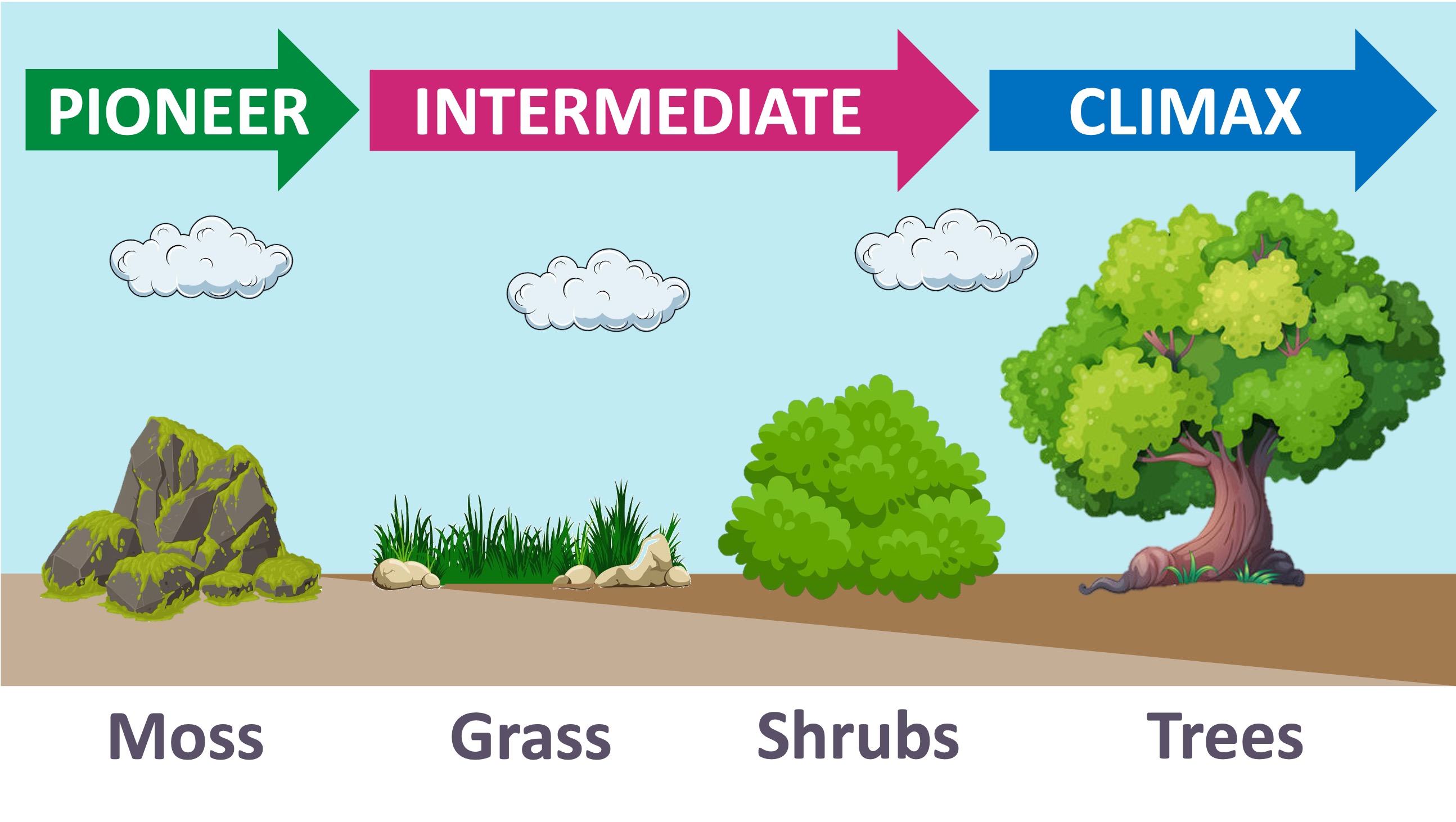

Primary Succession
Primary succession occurs when communities develop on entirely new land without any established soil
-
This may occur at river deltas, glaciers, sand dunes or on exposed rock
The organisms which first colonise the region are called pioneer species and typically consist of lichen or moss
-
As the lichen and moss die, they decompose, which creates the first organic soil capable of sustaining plant growth
As intermediate species of plant colonise the area, the litter produced by their growth and their decomposing remains will cause changes
-
Soil depth and soil mineral content will increase as plants add humus to the soil (this also changes soil pH)
-
Rocks begin to be broken down by the action of roots and the soil becomes aerated with increased water retention
These changes will allow for the growth of larger plants, which will reduce erosion through the binding action of their roots
-
Larger plant species lead to an increase in the primary production of a community
-
This supports a greater amount of nutrient cycling, leading to more complex food webs and an increase in species diversity
A climax community is reached when succession has ended and the community has all of its characteristics
-
A climax community is not always the most biodiverse, but it is the most stable community
Primary Succession


Note: Primary succession also occurs in marine environments
-
E.g. Coral polyps colonise bare rock, forming reefs that attract crustaceans and larger fish




